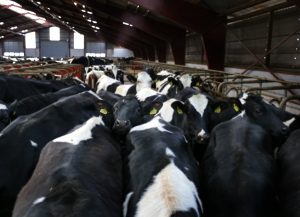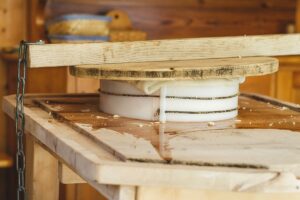Joaquin Ventura & Fernando Diaz
Bedding is an important source of exposure of udders to pathogens. To improve the control of mastitis produced by environmental pathogens, it is necessary to understand the relationships established between the bedding type and its management, with pathogen counts and their influence on udder health.
After decades of remarkable progress in combating contagious mastitis-causing pathogens, such as Staphylococcus aureus, controlling problems caused by environmental pathogens has become a priority. These environmental pathogens include streptococci (such as Streptococcus uberis), coliforms (Escherichia coli, Klebsiella spp., etc.), and other staphylococci (such as S. chromogenes).
How can environmental mastitis be controlled?
The control of environmental mastitis is based on four main actions:
- Reduce the number of bacteria present in the cows’ environment.
- Eliminate the bacterial load of the teats to prevent the entry of microorganisms into the udder.
- Increase cow resistance and resilience.
- Improve mastitis control strategies: early detection and improvement of treatment and preventive management, drying procedures, etc.
Relationship between bedding material, udder hygiene and milk quality
Understanding how bedding type, handling, bacterial count and health are related, is instrumental in improving strategies to prevent and control mastitis produced by environmental pathogens. This was the goal of a study conducted by researchers from the universities of Minnesota (St. Paul) and Washington, in which they observed the bacterial bedding counts, the hygiene and health of the udders, and milk quality of the bulk tank on 168 farms in 17 states.
Cows were housed on four different bedding types: new sand, recycled sand, manure solids or organic materials. Each herd was sampled twice (winter and summer) during 2016, and data were collected from both used and unused bedding. Most of the farms were in the Midwest (73.8%, 123 farms).
Bedding
Unsurprisingly, herds housed on bedding of manure solids showed the worst average data on udder hygiene (1.94 on a scale of 4), compared to the best for recycled sand bedding (1.73). This is consistent with the fact that the highest proportion of cows with dirty udders (score of 3 or more on a scale of 4) came from farms with manure bedding (22.1%).
Bacterial count
Regarding the bacterial count in bulk tank milk, Streptococcus and similar bacteria were also higher on farms bedding with manure solids (3.16 log10 CFUs/ml). Also high in these farms were coliforms (2.07) and the percentage of tanks positive to Mycoplasma (10.6%). In farms that bedded organic materials (59.5%) Staphylococcus aureus appeared most frequently in their bulk tanks. Farms with solid manure bedding, however, were second (53.0%), and well above recycled sand (36.4%) or new sand (29.4%) bedding.
Conclusion
The study showed that udder health worsened in herds with solid manure bedding compared to the rest of the types of bedding evaluated.
References
Patel K, Godden SM, Royster E, Crooker BA, Timmerman J, Fox L. 2020. Relationships among bedding materials, bedding bacteria counts, udder hygiene, milk quality, and udder health in US dairy herds. J. Dairy Sci. 102:10213–10234.
© 2021 Dellait Knowledge Center. All Rights Reserved.









